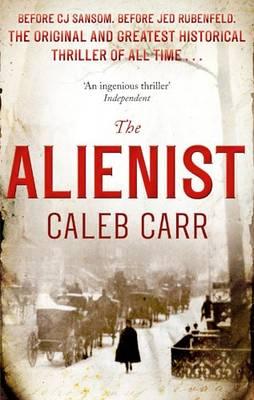Today, March 15, marks the 20th anniversary of The Alienist’s publication. Over the past 20 years, this much loved and groundbreaking novel has been published in 35 different formats and editions, and is now considered a “modern classic”. What an amazing achievement!
A few months ago I asked 17th Street visitors to provide ideas for the best way to commemorate the 20th anniversary, and I received some wonderful suggestions. However, as most of the proposed ideas required a physical presence in New York, and I’m located nine and a half thousand miles away on the other side of the world, unfortunately I had to rule the majority of the suggestions out. So, after lots of thinking, I concluded that perhaps the best way to celebrate the anniversary would be through a new content feature that emphasised time, and thus the idea to recreate The Alienist’s original text based timeline for the site was born.
The new timeline is now up and is fully interactive. It contains maps of key locations for particular dates and chapters, as well as markers for key international, national, and local events, thereby placing the novel’s sequence of events within a wider historical context. A few short film clips from 1896 have also been interspersed in appropriate sections of the timeline. The interactive timeline has a permanent place in The Alienist subsection of 17th Street, but a copy has also been included for interested visitors below. I hope you enjoy the new feature. If you notice any major historical events that I have forgotten to add, please feel free to contact me and I will amend the timeline.
In addition to my own commemoration of the occasion, The Bowery Boys have also put together a fantastic article detailing some of the key historical locations used within the book to mark the 20th anniversary. Do check it out!
Finally, on a personal note, I would like to thank Caleb Carr for his wonderful novel(s). I can’t speak for others, but The Alienist, and its sequel, have been that very rare kind of book that really has “changed my life” in more ways than is apparent through this website, and for that I have no adequate way of saying thank you.
[timeline src=”http://docs.google.com/spreadsheet/pub?key=0AnGirj3rPR9IdGpNdUdBV0NsN2JBVGxXbW8zZGs0c2c&output=html” width=”100%” height=”650″ font=”AbrilFatface-Average” maptype=”sterrain” lang=”en” ]

